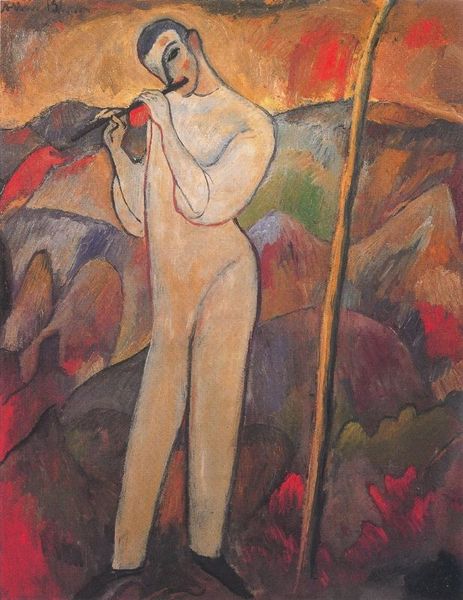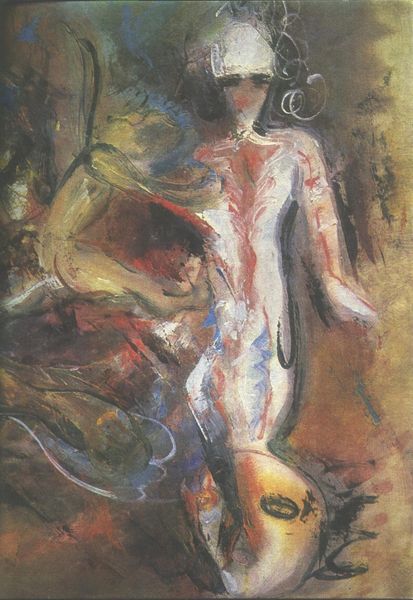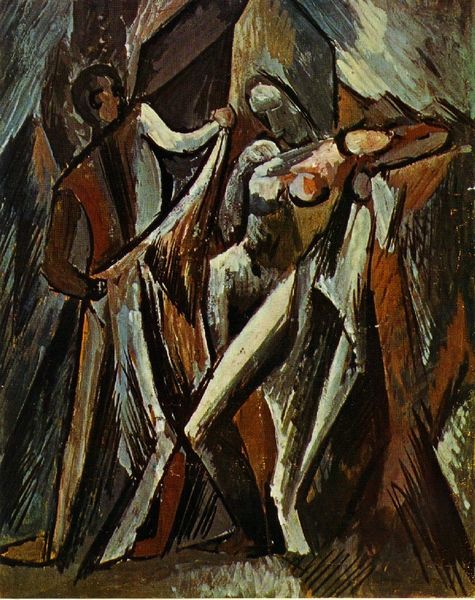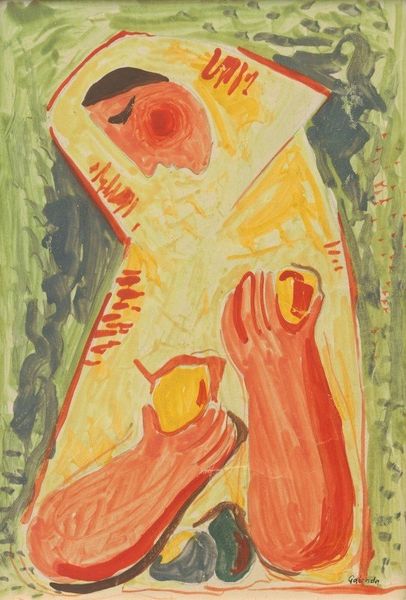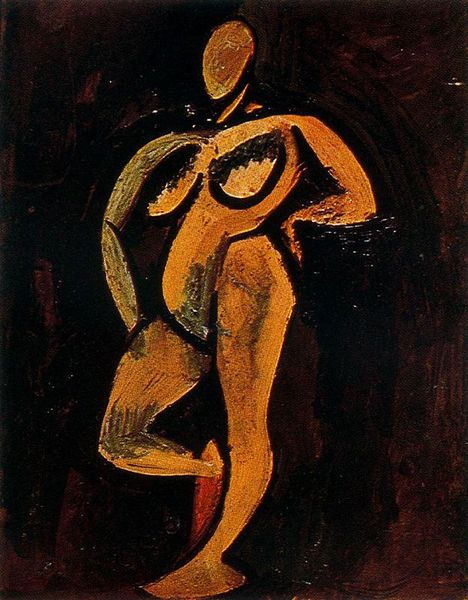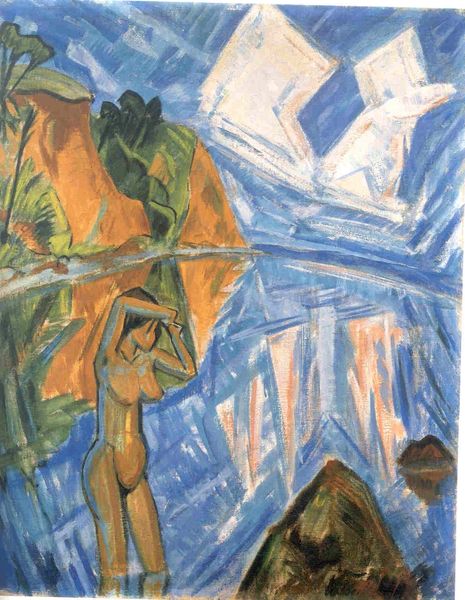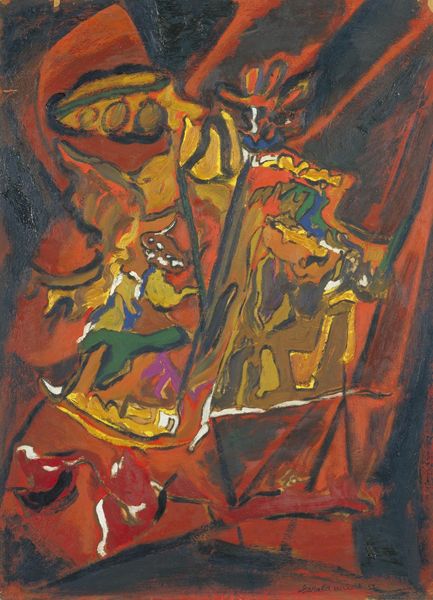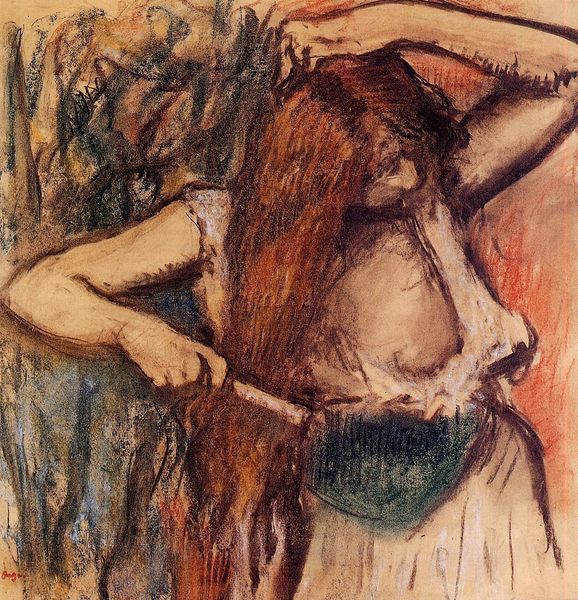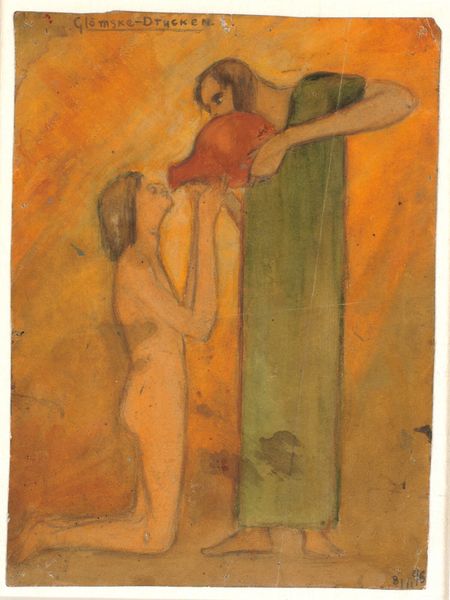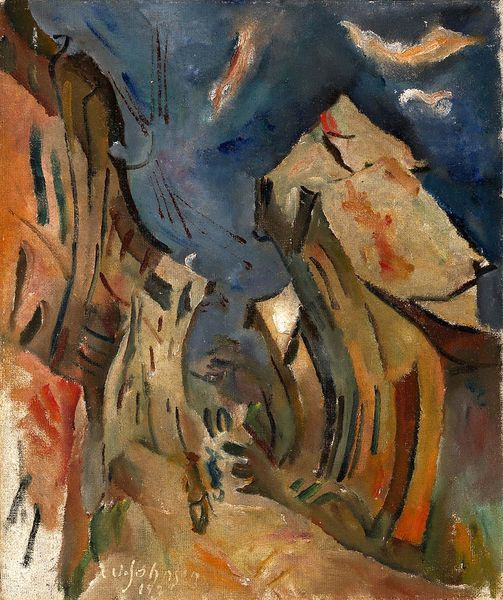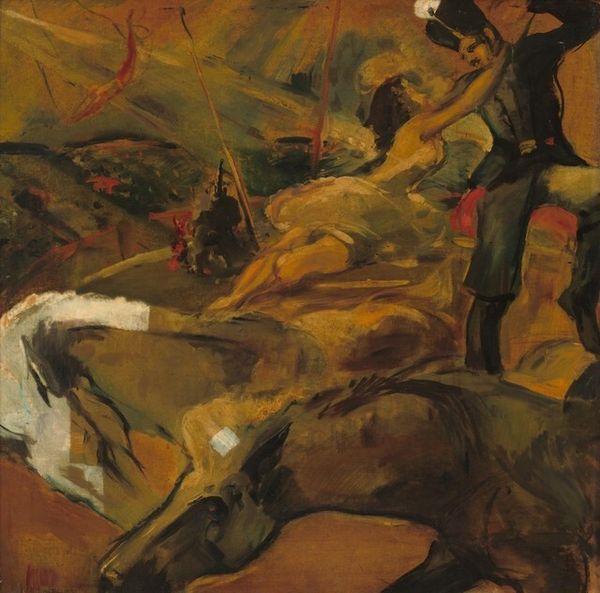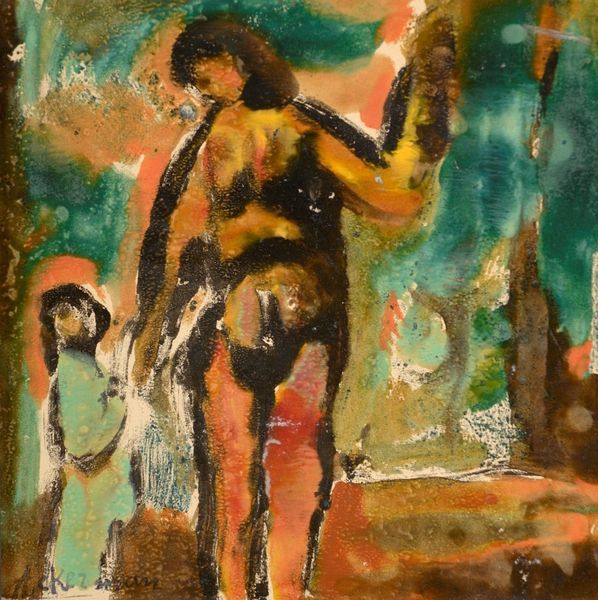
painting, oil-paint
#
portrait
#
painting
#
canvas painting
#
oil-paint
#
figuration
#
possibly oil pastel
#
oil painting
#
expressionism
#
history-painting
#
nude
Dimensions: 49.5 x 37.9 cm
Copyright: Public domain
Editor: This is Koloman Moser's "Judith and Holofernes" from 1916, rendered with oil paint on canvas. The colors are fiery and intense, almost unsettling. What do you see in this piece, beyond the obvious narrative? Curator: The unsettling nature you perceive is precisely where we should begin. Moser painted this during World War I, a time of immense social upheaval. How might the story of Judith, a woman taking violent action against a powerful male oppressor, resonate with the anxieties and shifting gender roles of the era? Editor: That's a powerful point. I hadn't considered the war's impact so directly. Does the Expressionistic style contribute to this sense of unease? Curator: Absolutely. Expressionism, with its distortion and emotional intensity, visually reflects the psychological trauma of the time. Consider how the stark contrast between Judith's luminous figure and the shadowed, almost dissolving form of Holofernes destabilizes traditional power dynamics. It’s a visceral depiction of female agency and resistance. What does this say about traditional artistic portrayals, do you think? Editor: It completely inverts the typical male gaze! It's not about idealized beauty, but about action, power, and even… liberation? Curator: Precisely. And liberation from what, and for whom, are key questions we must always ask when confronting images like this one. Editor: Thinking about it in this way makes me see beyond the violence and understand it as a statement about control. Curator: It becomes a site of potential resistance, a challenge to patriarchal norms and the established social order, viewed through the lens of a specific historical moment. A potent reminder that art doesn't exist in a vacuum.
Comments
No comments
Be the first to comment and join the conversation on the ultimate creative platform.
